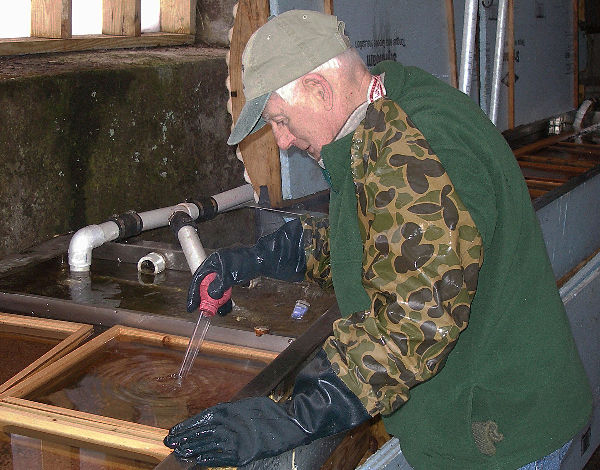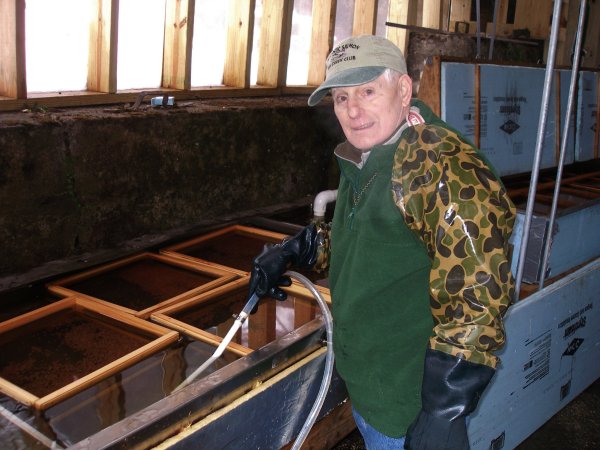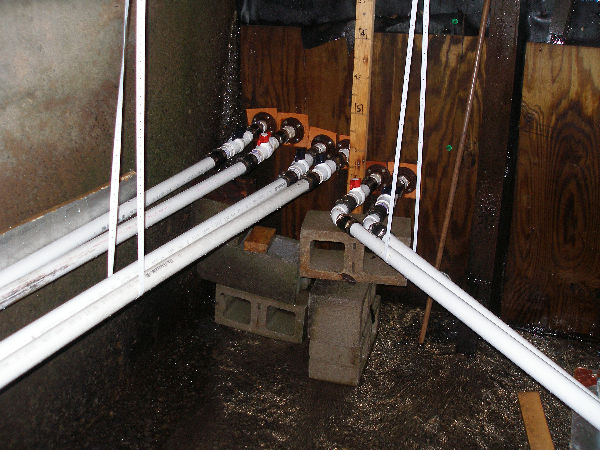Mike is picking out bad eggs. The procedure is to identify the bad eggs and to remove them using a baster. Care must be used to not select good eggs. It is really important to remove eggs that have died or failed to mature as the eggs will decompose and a fungus will infect them and because the eggs are close together fungus spreads easily.

Mike is wearing trappers gloves which protects his hand from the cold water.


